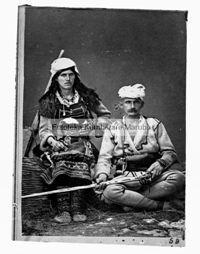
Figure 22: Photo of a highland man and woman, taken between 1890 and 1900 by P. Marubi. Courtesy of the Fototeka Kombëtare Marubi, Shkodra, Albania.
Tradition strongly suggests that the ancestors of the current inhabitants of Shala arrived fleeing the late 15th-century Ottoman conquest (Bartl 1975; Bolizza 2003 [1614]; Ducellier 1987; Durham 1985 [1909]), marked by the presence of Late Medieval pottery throughout the valley, but particularly concentrated around churches and at the fort of Dakaj (SVP Site 007; see for example P221-227, P381-383, P403). Indeed, their flight was in many ways successful, as the Ottomans never fully extended their control into the high mountains (Reinkowski 2003). Shala essentially avoided being fully incorporated into the Ottoman landholding system (the timar), and initially at least its inhabitants were left relatively autonomous, tasked only with being 'guardians of the gorges' (derbendci) (Pulaha 1974, 1976; Bizzi 2003 [1610]).
In all probability the rewards for a massive military effort to subjugate the mountains were simply too small. Nevertheless, pre-existing and necessary economic connections with the outside world forced the highland tribes to accept a kind of compromise. The highlanders eventually acknowledged a commitment to military service for the Ottomans, organised and led by a local bajraktar (see Section 3). The bajrak system may have begun as late as the late 18th century; the first written reference to bajraks is from 1783 (Ulqini 1991; Hasluck 1954). The men chosen for the position were local military figures, but it is likely that the position was deliberately designed by the Ottomans to discourage integration by exploiting tribal rivalries. The bajraktars could be played one against the other, and could also be pitted against the more traditional authority of the tribal chiefs and elders. Economic and political competition between tribes and tribal leaders reduced the possibility of tribal confederation and the kind of coordinated, mass uprisings that the Albanian national hero Skanderbeg had led in the 15th century (Pollo and Puto 1981; Winnifrith 1992).

Figure 22: Photo of a highland man and woman, taken between 1890 and 1900 by P. Marubi. Courtesy of the Fototeka Kombëtare Marubi, Shkodra, Albania.
However compromised the autonomy of the highlanders might have been by Ottoman meddling, it was nevertheless full enough to result in a near complete dearth of archival sources. Highland autonomy generated vanishingly few records. It is still possible to discern, however, the possibility of a long mountain tradition of 'exporting' military labour, either as mercenaries or as manpower to the Ottoman state. If true, this continuous pattern of at least temporary out migration for military service would stand in marked contrast to the assumptions of isolation made by European travellers of the 19th and 20th centuries (e.g. Hasluck 1954; Lane 1923; Durham 1985 [1909]), and even some modern scholars (e.g. Fischer 1999). Indeed, some scholars have doubted the extent of military out migration even for earlier periods. Millar (1976) suggested that the widespread Albanian mercenaries of 16th-century Europe (serving mostly in the Italian wars, but also as far away as England) were the expatriate refugees from Skanderbeg's failed war at the end of the 15th century and as the first and perhaps the second generation of those men died, they were not replaced. The Shkodra region, however, continued to be known for irregular light cavalry in Ottoman service (Anonymous 2003 [1570]). Hecquard (1858) describes incidents in 1773 and in 1836 of men from Shala taking different parts in struggles for the control of Shkodra. In addition, at least one local informant recalled that his great-grandfather had been a soldier in the Ottoman army, roughly 100-125 years ago (interview with informant, 2006; while Albanians were famously a major component of Ottoman armies throughout the empire, the question addressed here is the extent to which the highlanders themselves were contributors to Ottoman or other forces; Pichler 2002 argues for a long continuity in the tradition of Albanian mountaineers serving as mercenaries). Early Modern military labor forms a major component of our ongoing archival research, but the male martial tradition of the mountain tribes was famous right through World War II (Fig. 22), and the movement of men in and out of the mountains for this purpose may have been a major component of what we believe must have been near-continuous traffic between the highland tribes and the outside world (Brunnbauer 2004 considers other reasons for interaction). Lacking a firm documentary base, however, we hope that an examination of population and settlement patterns in Shala in the 20th century might help illuminate earlier eras.
© Internet Archaeology/Author(s)
URL: http://intarch.ac.uk/journal/issue27/1/5.3.cfm
Last updated: Thu Feb 25 2010